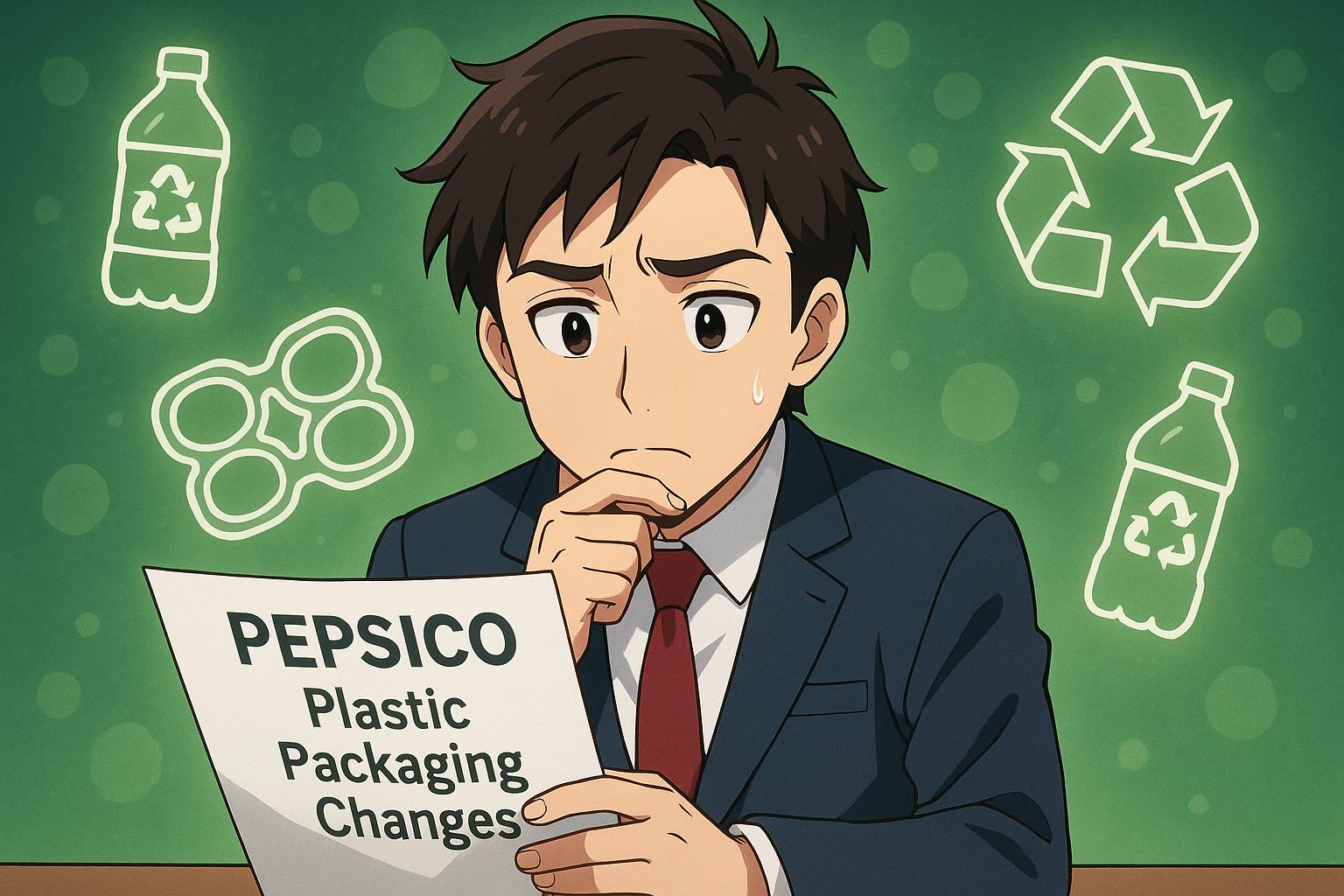Concerns are mounting among investors regarding PepsiCo's recent modifications to its plastic packaging commitments. The multinational food and beverage corporation announced last week that it would be "refining" aspects of its PepsiCo Positive strategy, initially introduced in September 2021. This revision includes a significant shift away from a previously set target of delivering 20% of all beverage servings through reusable models by 2030, opting instead to focus on broader initiatives aimed at designing packaging that is reusable, recyclable, or compostable.
As part of these changes, PepsiCo has also adjusted its objective of reducing the absolute tonnage of virgin plastics by 20% by 2030. The new goal involves an average reduction of just 2% annually through 2030. While PepsiCo reported cutting its absolute tonnage of virgin plastic by 6% at the end of 2023, this represents a decline in progress compared to its 2022 achievement of an 11% reduction. Moreover, the company has lowered its recycled content target from 50% by 2030 to "40% or greater" by 2035 or sooner and has postponed its deadline for using "100% recyclable, compostable, biodegradable, and reusable packaging" from 2025 to 2030.
This move to narrow the targets has raised eyebrows among investors, particularly as PepsiCo prepares to focus its efforts on key markets that it believes will yield the most significant impact. The company claims this adjustment allows for better management of external factors affecting its goals, though the reduced scope highlights a retraction from more ambitious environmental commitments.
Investor scrutiny surrounding PepsiCo's plastic use has intensified over the years, with multiple shareholder proposals aimed at urging the company to ramp up its sustainability measures. Notably, during its recent annual general meeting (AGM), a proposal by As You Sow received 15.6% support, calling for a report on how PepsiCo might tackle flexible plastic packaging in alignment with recommendations from the Pew Report and other authoritative studies. Investors such as Legal & General, CalPERS, and Storebrand Asset Management have echoed these concerns, signalling a shift in investor sentiment focused on sustainability.
Michiel van Esch, head of voting at Robeco, highlighted the complexities involved in addressing ecological issues such as plastic pollution. He remarked that while progress is acknowledged, it appears that PepsiCo is not on track to meet its 2025 packaging goals. He raised alarm over a broader industry trend, noting that other corporations have similarly adjusted their sustainability targets to scale back commitments, which he deemed concerning given the ongoing impact of microplastics on ecosystems worldwide.
Coca-Cola has faced a parallel fate, having revised its aims to focus more on utilising recycled materials rather than reducing reliance on single-use plastics altogether. Similarly, Unilever also downgraded its target of halving virgin plastic consumption by 2025 to one-third by 2026. Such retractions are coming at a time when regulatory mechanisms like Extended Producer Responsibility (EPR) regulations are emerging in jurisdictions such as California, aiming to ensure that companies take responsibility for the lifecycle of their products.
Miranda Beacham, head of UK responsible investment at Aegon Asset Management, expressed disappointment with PepsiCo's rollback, stressing the need for continued dialogue on these crucial environmental issues. Andrew Shalit from Green Century Capital Management echoed similar sentiments, highlighting the need for long-term solutions beyond recycling. He asserted that PepsiCo's position as one of the largest contributors to plastic pollution necessitates a stronger commitment to tackling the issue, especially as the focus on reusable packaging continues to gain traction within the industry.
As investor pressure mounts and regulations tighten, PepsiCo's recent changes to its sustainability strategy may not only have financial implications for the company but also affect its reputation as a leader in environmental responsibility. Industry analysts and concerned stakeholders alike are keenly watching how the company navigates these challenges in a landscape increasingly defined by sustainability.
Reference Map:
- Paragraph 1 – [1]
- Paragraph 2 – [1], [2], [3]
- Paragraph 3 – [1], [4], [6]
- Paragraph 4 – [1], [5], [7]
- Paragraph 5 – [1], [2], [3]
- Paragraph 6 – [3], [4], [5]
- Paragraph 7 – [6]
Source: Noah Wire Services
